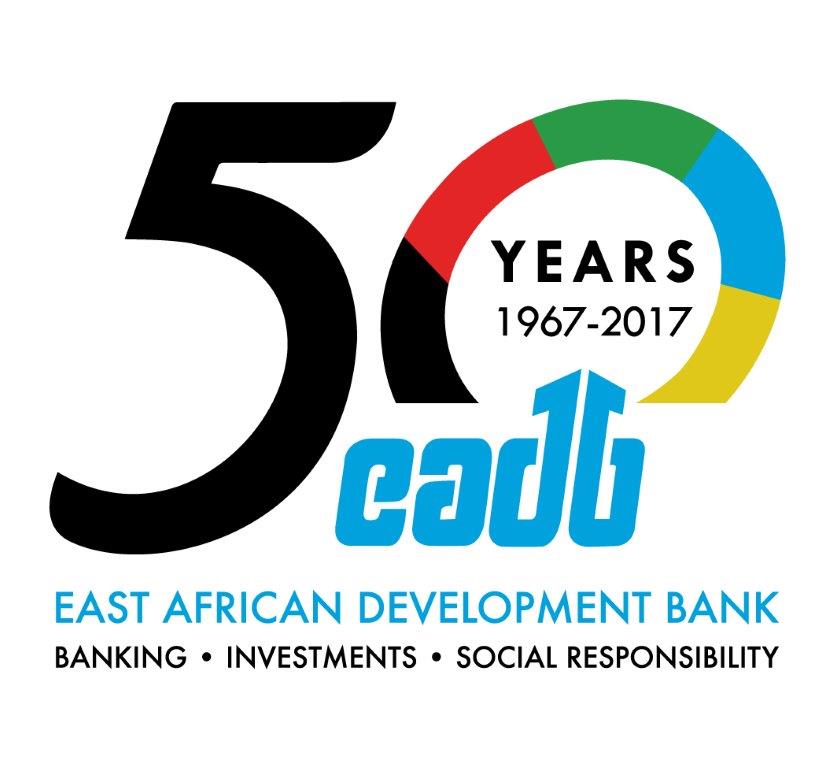
EADB at 50
At 50 years old, the East African Development Bank has out-lived most of the population of it’s member states (Kenya, Rwanda, Tanzania and Uganda). Indeed, given the median age of the population in EADB’s member states is below 30, the East African Development Bank was born in the same generation as many of East Africa’s grandparents today.
Like East Africa’s grandparents, the East African Development Bank has seen the region’s vibrant history, including the immediate aftermath of independence from British colonial rule, regional and civil wars, droughts, regional and international economic crises, but also the evolution of democracy, regional economic diversification and the discovery of natural resources in all EADB member states.
Throughout the changing historical landscape, EADB has demonstrated both stability and steadiness to serve its member states, but also flexibility to meet its member states changing requirements and priorities. EADB’s initial focus was solely upon industrialisation, which was deemed necessary to stimulate import substitution and export promotion, to create jobs and alleviate poverty and which was necessary to achieve EADB’s first mission to promote industrial development, reduce industrial imbalances between member states and enhance regional industrial complementarity. Over time, EADB has evolved and widened its focus to include agriculture, which today remains the backbone of East Africa’s economy and main source of employment and thus income generation for the majority of the population; and later tourism, which promotes economic diversification and foreign exchange generation. More recently, EADB’s focus areas up to 2020 include climate change, food security, infrastructure, skills development and regional integration, which we believe are the most import sectors to achieve our mission to promote sustainable socio-economic development in East Africa by providing development finance, support and advisory services.
Similarly, EADB’s toolkit to achieve its mission has evolved over time in need with the state of the East African economies and with the prevailing government priorities. For the first couple of decades EADB solely offered loans for projects that would support industrialisation. However, as the economies became more developed and EADB widened its scope to support increasingly wide reaching government objectives, EADB introduced new financial instruments, including asset leasing and equity buying to support its development mandate. Looking forward, we intend to further the success of public-private-partnerships (PPPs) in the region and offer further lines of credit to commercial banks. PPPs have numerous benefits: they allow for larger amounts of financing to be raised by combining public and private sector investments, they allow governments to reduce investment risks to private sector, whilst increasing the efficiency of public sector investments; all of which are particularly useful for large infrastructure investments that can take a long time to become profitable and are currently the vanguard on government agenda. By offering lines of credit to commercial banks, we can reach the underfinanced SME sector through commercial banks that have the ability to offer small loans in rural areas, whilst also building capacity in the commercial banks that we partner with and thereby driving financial sector development.
EADB has also evolved in how it raises funds since its inception 50 years ago. In 1967, EADB was instated by its founding fathers, the Presidents of Kenya, Tanzania and Uganda: Jomo Kenyatta, Julies Nyerere and Milton Obote respectively, who all pledged public capital in return for equity stakes in the East African Development Bank. (EADB was under care of the Bank of Uganda for its first year and BoU officially handed over the responsibility to EADB in 1968). Within two years, EADB had already attracted private sector shareholders, which today include commercial banks and international and national development finance institutions. Since, EADB has raised vast sums of capital through lines of credit from a wide array of development finance institutions and through issuing corporate bonds. Indeed, the East African Development Bank was the first institution to issue a corporate bond in East Africa in 1996 and thereafter embarked on a series of bond launches, which undoubtedly drove financial sector deepening through initiating capital markets in East Africa. In the future, EADB intends to resume its bond issuance and raise climate finance through many of the green funds that have become available for developing countries to contribute towards climate change adaptation and mitigation following the Paris agreement.
At EADB, we are extremely proud of what we have achieved in the past 50 years. However, our ambitions for the next 50 years are even greater. We hope to contribute to massive infrastructure development throughout the region, particularly in green infrastructure investments, which will also promote regional integration, and to mobilise public-private-partnerships to increase the efficiency of our investments. And more generally, we hope to become a driver of projects that support climate change mitigation and adaptation given the growing importance of global green growth. Finally, we will continue to invest in the human capital of East Africa, through supporting projects and additional tailor-made training sessions that develop certain aspects of our labour force under our comprehensive corporate social responsibility programme. It is our dream that all of our member states achieve their ambitions to become middle-income countries before another 50 years passes.